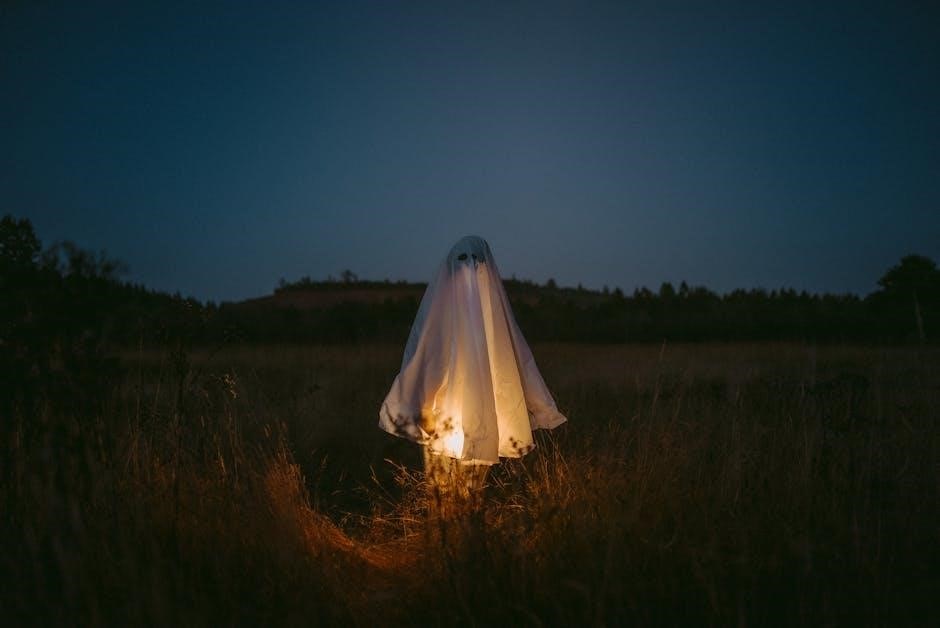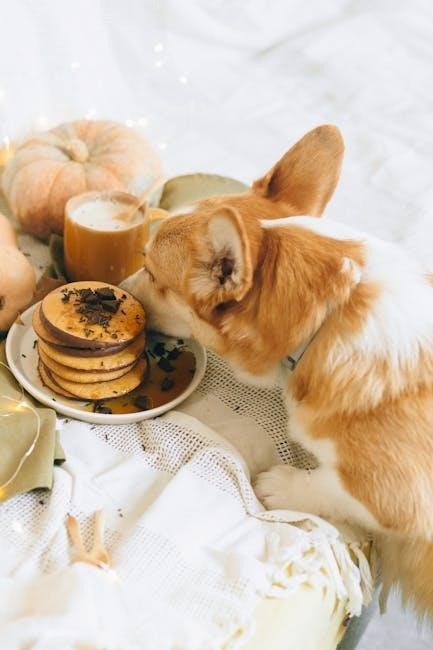Trick-or-Treating Etiquette: A Comprehensive Guide
Halloween’s fun hinges on respect. Etiquette fosters community spirit, ensuring a safe, enjoyable night. Follow guidelines, visit lit homes, and be polite. Good manners make Halloween better for everyone involved.
Trick-or-treating, a beloved Halloween tradition, involves more than just costumes and candy; it’s a social contract. The phrase’s origins date back to 1927, evolving into a nationwide activity. It’s a unique festival of gift-giving between strangers, where minor gifts are exchanged. Basic manners can easily be forgotten amidst the excitement fueled by sugar.
Etiquette ensures everyone enjoys the festivities. Following proper etiquette, like only visiting homes with lights on, is key. Halloween, like any festival, presents potential etiquette mishaps. Observing customs, like making jack-o-lanterns, adds to the tradition. Remember, etiquette fosters respect and community among participants.
By understanding and practicing trick-or-treating etiquette, we contribute to a positive and enjoyable Halloween experience for all, strengthening community bonds and ensuring the continuation of this cherished tradition for years to come. So let us all be mindful of others and make this Halloween a night of fun and respect.

Safety First: Trick-or-Treating Guidelines
Halloween safety is paramount. Prioritize well-being whether handing out candy or trick-or-treating. Ensure a safe and enjoyable night by following guidelines and taking necessary precautions for both children and adults.
Supervision of Children
Never let children trick-or-treat alone. Safe Kids Worldwide data reveals that a shocking number of young children are allowed to trick-or-treat without adult supervision, which is unconscionable. Younger children need direct supervision for their safety and well-being, and to ensure proper Halloween etiquette is observed.
Always accompany young children. For older kids, establish clear boundaries, routes, and check-in times. Ensure they travel in groups with responsible friends. Equip them with flashlights or reflective gear for increased visibility, and teach them to avoid dark or isolated areas.
Regular communication and pre-planned meeting points will help give everyone peace of mind. Remind them to never enter a stranger’s home or car. Constant supervision will help them display trick or treating etiquette
By prioritizing supervision, parents and guardians can significantly reduce risks and create a safer, more enjoyable trick-or-treating experience for everyone.
Safe Routes and Visibility
Planning a safe route is crucial for trick-or-treating. Prioritize well-lit streets and sidewalks, avoiding areas with heavy traffic or construction. Discuss the route with children beforehand, pointing out potential hazards and safe places like well-lit stores or neighbors’ homes.
Visibility is key. Costumes should incorporate reflective tape or bright colors to make children easily visible to drivers and pedestrians. Carry flashlights or glow sticks to enhance visibility, especially as dusk turns to night; Avoid costumes with masks that obstruct vision; opt for face paint instead.
Remind children to stay on sidewalks and cross streets at crosswalks, obeying traffic signals. Encourage them to look both ways before crossing, and never to run into the street. Establish check-in points along the route for older children trick-or-treating without direct supervision.
By taking these precautions, you can create a safer and more enjoyable Halloween experience for everyone involved.
Respecting Homeowners and Property
Show respect for homeowners. Approach only homes with lights on, signaling participation. Avoid houses with no lights, respecting their privacy. Be mindful of property, staying on walkways and refraining from damaging decorations.
Approaching Homes with Lights On
A brightly lit porch is the universal sign of a welcoming home on Halloween night. When you see lights, it signals that the residents are prepared and willing to participate in the trick-or-treating fun. Proceed with a cheerful “Trick or Treat!”
However, even with the inviting glow, maintain a respectful distance. Avoid crowding the doorway or blocking the path for others. One group at a time ensures a smooth and courteous exchange.
Remember to be mindful of decorations. While admiring the spooky displays, be careful not to touch or disturb them. Accidents happen, but prevention is key to showing respect for the homeowner’s efforts.
If a homeowner is engaged in a conversation with another group, wait patiently at a respectful distance. Do not interrupt or try to push your way to the front. A little patience goes a long way in ensuring a positive experience for everyone involved.
Avoiding Homes with No Lights
A dark porch on Halloween night speaks volumes: “Please do not disturb.” Homes without exterior lights are signaling that they are not participating in trick-or-treating. This could be due to various reasons, such as the residents being away, not celebrating Halloween, or simply not having enough candy.
Respecting this signal is crucial for maintaining good community relations. Bypassing unlit homes prevents unwanted disturbances and shows consideration for those who may not wish to be involved. Continuing to approach such houses can be interpreted as rude or intrusive.
Explain the significance of unlit homes to children before heading out. It helps them understand the boundaries of trick-or-treating and fosters a sense of respect for others. Make it clear that skipping these houses is not a matter of missing out but a matter of being considerate.
If unsure, err on the side of caution and skip the house. There are plenty of other brightly lit homes eager to share in the Halloween fun.

Manners and Politeness
Good manners are vital for enjoyable trick-or-treating. Encourage polite behavior, whether trick-or-treating or at parties. Etiquette fosters respect and community. A little politeness makes Halloween better for everyone.
Saying “Trick or Treat” and “Thank You”
These simple phrases are the cornerstone of trick-or-treating etiquette. Saying “Trick or Treat” politely acknowledges the homeowner’s participation and sets a positive tone. It’s the customary greeting that initiates the exchange of treats. A cheerful delivery enhances the interaction, making it more pleasant for everyone involved.
Equally important is saying “Thank You” after receiving a treat. This expresses gratitude for the homeowner’s generosity and reinforces good manners. It demonstrates appreciation for their time, effort, and willingness to share in the Halloween spirit. A sincere “Thank You” leaves a lasting positive impression.
These phrases may seem basic, but they are essential for fostering a respectful and enjoyable trick-or-treating experience. They create a sense of community and ensure that everyone feels valued and appreciated. Remembering these simple courtesies contributes significantly to the overall fun and positive atmosphere of Halloween night. Polite interactions enhance the experience for both trick-or-treaters and homeowners.
Being Considerate of Others
Halloween night thrives on community spirit. Being considerate of others is paramount to ensuring a positive experience for everyone involved. This includes being mindful of noise levels, especially in residential areas. Avoid loud shouting or disruptive behavior that could disturb residents. Respect personal space and property by staying on walkways and avoiding trampling lawns or gardens.
Consider those with sensitivities. Some individuals may have sensory overload. Be mindful of flashing lights or loud sounds if visiting homes with young children or individuals with sensory sensitivities. Be aware of those with mobility issues. Ensure pathways are clear and accessible to all.
Extend kindness and understanding to fellow trick-or-treaters. Be patient and courteous in crowded areas. Share the fun and avoid monopolizing homeowners’ time. By practicing consideration, we contribute to a more inclusive and enjoyable Halloween for everyone. It’s about fostering a respectful and harmonious environment where everyone can participate and celebrate safely.

Allergies and Dietary Restrictions
Be mindful of allergies. The Teal Pumpkin Project offers non-edible treats. Consider alternatives for kids with dietary needs. Plan for trick-or-treaters with food allergies to ensure a safe and inclusive Halloween.
The Teal Pumpkin Project
The Teal Pumpkin Project is a wonderful initiative promoting inclusivity during Halloween. Homes displaying a teal pumpkin signal the availability of non-food treats, catering to children with allergies or dietary restrictions. This simple gesture can make Halloween enjoyable for everyone. By offering alternatives like stickers, small toys, or other trinkets, you ensure that all children can participate in the trick-or-treating fun.
Consider joining the Teal Pumpkin Project this year to create a more inclusive and safe Halloween experience. It’s a small effort that can make a big difference in a child’s life. Providing non-edible options prevents children with allergies from feeling left out and allows them to partake in the Halloween tradition without worry.
The project helps raise awareness about food allergies and promotes understanding within the community. It encourages empathy and consideration for others, fostering a more inclusive environment for all trick-or-treaters. So, paint a pumpkin teal, stock up on non-food treats, and spread the word!
Offering Alternative Treats
Beyond the Teal Pumpkin Project, offering alternative treats shows consideration. It helps ensure that children with allergies or dietary needs can fully enjoy Halloween. Think beyond candy! Stickers, small toys, pencils, and bubbles are great options. These alternatives can be just as exciting for kids.
Consider the joy of receiving something unique. Non-food treats can spark creativity and imagination. They also last longer than candy, offering extended enjoyment. When preparing your treat selection, think about variety. A mix of candy and non-candy options caters to diverse needs and preferences.
Clearly label your non-food treats. This helps children and parents easily identify safe choices. You can create separate bowls or sections for candy and alternatives. This avoids confusion and promotes a safe, inclusive trick-or-treating experience. Remember, a little thoughtfulness goes a long way. By offering alternative treats, you make Halloween a happy occasion for everyone.

Ending the Night Responsibly
As Halloween ends, remember responsibility. Know when it’s time to stop trick-or-treating. Dispose of wrappers properly, keeping neighborhoods clean. These actions ensure respect and a positive community experience for everyone involved.
Knowing When to Stop Trick-or-Treating
Determining when to conclude trick-or-treating is essential for a responsible Halloween. As the evening progresses, respect established timeframes within your community. Observe cues like houses turning off porch lights, signaling the end of their participation.
Consider the age and stamina of your children; younger ones tire more quickly. A pre-determined endpoint prevents exhaustion and maintains enthusiasm. Communicate the timeline clearly to manage expectations and avoid disappointment.
Be mindful of homeowners who may have early bedtimes or other commitments. Continuing to knock on doors late into the night is inconsiderate. As a general rule, aim to finish before 9 PM, or earlier if local customs dictate.
Ultimately, knowing when to stop demonstrates respect for residents and ensures a positive experience for everyone. Ending the night responsibly contributes to the spirit of community and goodwill associated with Halloween.
Disposing of Wrappers Properly
Responsible disposal of candy wrappers is an integral part of Halloween etiquette. As you and your children enjoy your trick-or-treating haul, be mindful of the environment and community spaces. Avoid littering streets, sidewalks, and yards with discarded wrappers.
Carry a designated bag or container specifically for collecting wrappers. This simple practice prevents unsightly messes and demonstrates respect for homeowners and public areas. Encourage children to participate by making it a fun, collaborative effort.
When a trash receptacle is unavailable, hold onto wrappers until you reach home. Designate a recycling bin for appropriate packaging materials to minimize environmental impact. Consider repurposing wrappers for craft projects or other creative endeavors.
By properly disposing of wrappers, you contribute to a cleaner, more enjoyable Halloween experience for everyone. This simple act of responsibility reinforces positive values and promotes a sense of community pride. Make it a priority to leave no trace behind as you celebrate the holiday.
